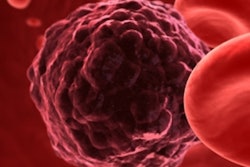
Oral cancer accounts for almost 3% of all new cancer cases according to the U.S. National Institutes of Health's National Cancer Institute (NCI). A specific mouth cancer, oral squamous cell carcinoma (OSCC), makes up 90% of all mouth cancers, according to research published in the Open Dentistry Journal (August 10, 2012). Unfortunately, the five-year survival rate for patients with OSCC is 40% to 50%, according to a 2011 publication in CA: A Cancer Journal for Clinicians (March/April 2011, Vol. 61:2, pp. 69-90). Since there is relatively no pain with OSCC, early detection is critical but rare.
 Alvin Danenberg, DDS.
Alvin Danenberg, DDS.If we knew what was causing mouth cancer, we might be able to nip it in the bud. There is research published in Frontiers in Cellular and Infection Microbiology (February 24, 2017) suggesting that OSCC might be caused or aggravated by an old enemy -- Porphyromonas gingivalis.
A major bug
P. gingivalis is a major bug in chronic periodontitis. Its aggressive behavior in dental plaque may be a direct result of chronic systemic inflammation and a compromised host response (Nature Reviews Immunology, December 23, 2014). Once P. gingivalis becomes pathogenic, the immune system has a difficult time killing it.
“If we knew what was causing mouth cancer, we might be able to nip it in the bud.”
Resulting damage to the jawbone from periodontitis is more than a result of bacteria. It is predominantly a result of chronic inflammation created by activation of the immune system to try to kill off P. gingivalis, according to a 2012 study in Molecular Oral Microbiology (September 3, 2012). It is interesting that P. gingivalis can penetrate into epithelial cells and exit from epithelial cells, all along increasing chronic periodontal infection, according to a 2016 study in Microbial Pathogenesis (May 2016, Vol. 94, pp. 42-47). This bacterium can also penetrate other cells and travel to various parts of the body, leading to other diseases (Journal of Oral Microbiology, August 31, 2015).
Periodontitis
Research published in Microbes and Infection (July 2015, Vol. 17:7, pp. 473-483) has shown that P. gingivalis will spread to initial lesion sites of OSCC in the soft tissues of the mouth. Another 2015 study (Tumour Biology, December 2015, Vol. 36:12, pp. 9947-9960) found that oral cancer cells and cancer stem cells became more aggressive after repeated infection by P. gingivalis. Tumor-like changes appeared to occur with long-term infection from P. gingivalis.
If periodontal disease were diagnosed and treated as soon as possible, then the tendency for P. gingivalis to increase the potential for epithelial cells to become malignant might be halted.
In addition to treating periodontitis, I talk with my patients about nutrition and lifestyle changes. It is also important to enhance the immune system and eliminate chronic systemic inflammation. A nutrient-dense, anti-inflammatory diet will go a long way in assisting the body to heal and protect itself going forward.
A version of this column first ran on Dr. Danenberg's blog. DrBicuspid.com appreciates the opportunity to reprint it. His book Crazy-Good Living from Elektra Press is available here.
Alvin Danenberg, DDS, practices at the Bluffton Center for Dentistry in Bluffton, SC. He is also on the faculty of the College of Integrative Medicine and created its integrative periodontal teaching module. He also spent two years as chief of periodontics at Charleston Air Force Base earlier in his career. His website is drdanenberg.com.
The comments and observations expressed herein do not necessarily reflect the opinions of DrBicuspid.com, nor should they be construed as an endorsement or admonishment of any particular idea, vendor, or organization.



















